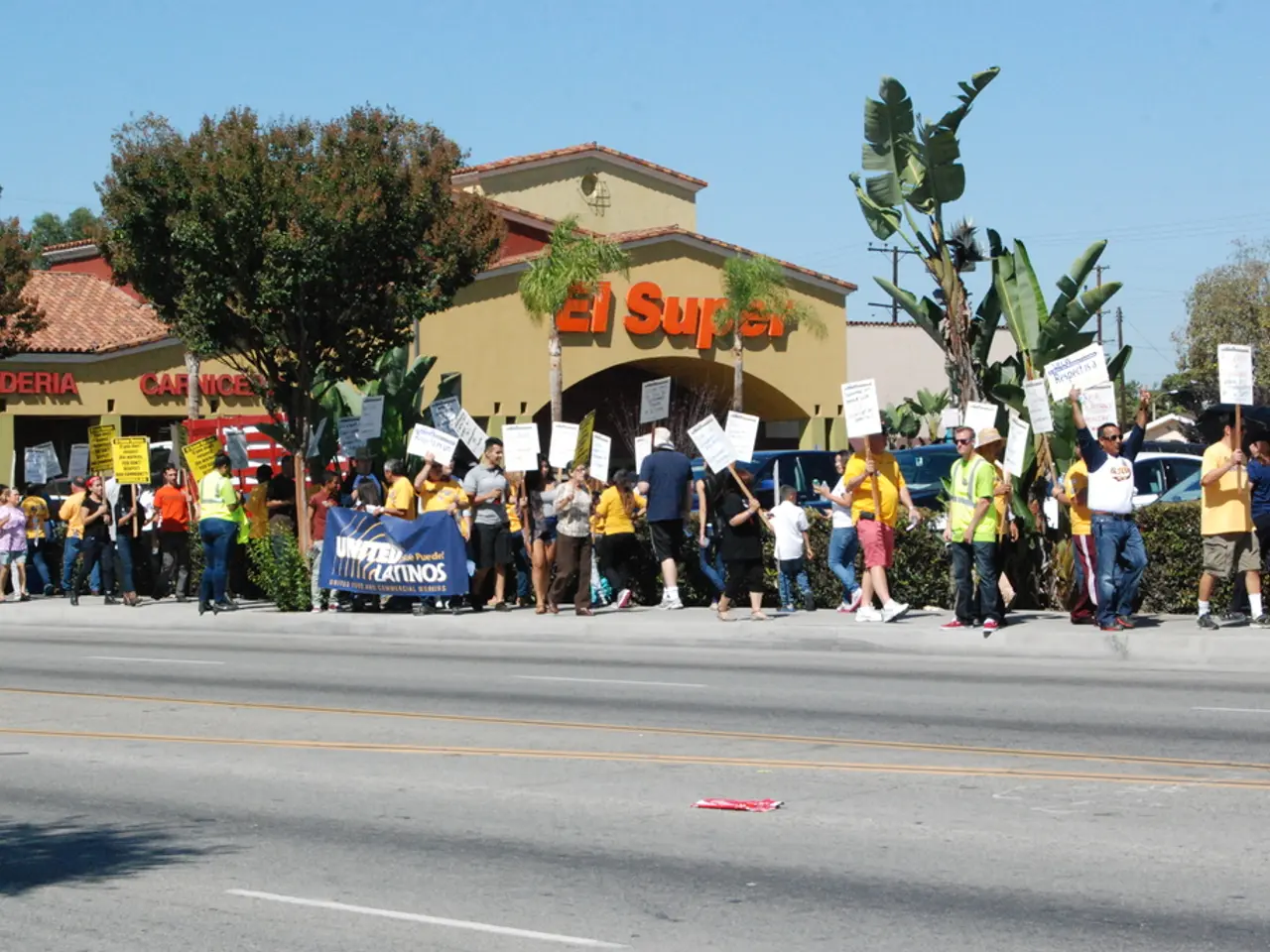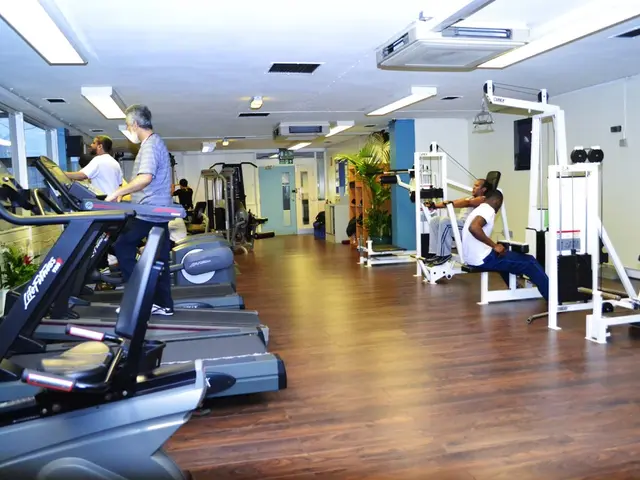Election Survey and Opinion Poll Guidelines for Optimal Results
In the quest to bring Indian election polls in line with international best practices, it's essential to adopt global standards in sampling, methodology, transparency, and data analysis while adapting to local contexts. Here, we delve into the key practices for conducting opinion polls and election surveys that can help ensure representativeness, minimise bias, and produce reliable results.
Firstly, it's crucial to employ sampling techniques that provide an accurate reflection of the voting population. Random sampling, stratified sampling, and quota sampling are all viable options, with the latter being particularly useful for balancing demographic groups when strict randomness is not possible.
Question design plays a pivotal role in the success of any survey. A mix of question types, including open-ended, multiple choice, ratings, scaled responses, and demographic questions at the end, can capture nuanced opinions and classify respondents effectively. Questions should be worded neutrally to avoid leading respondents and must be clear and simple to understand.
Survey methods should be diverse, reaching out to various populations and reducing biases inherent in any single mode. Online surveys may have self-selection bias, while telephone polls are challenged by declining response rates. Face-to-face interviews, though less common for large samples, can provide high-quality data.
Bias reduction is another critical aspect to consider. Response rates can be increased through reminders and incentives, while conducting blind or anonymous surveys can reduce social desirability bias. Interviewers should be trained to remain neutral during in-person surveys.
After data collection, statistical weighting can be applied to adjust for underrepresented groups and improve accuracy. Pollsters also use modeling scores and voter files in election surveys to better identify and sample likely voters.
Timing and population sample are crucial factors for election polls. The survey population should be defined carefully (all adults, registered voters, or likely voters), with polls of registered voters being appropriate well before the election, and likely voter polls being better closer to election day but relying on accurate turnout modeling.
Interpreting results requires evaluating poll quality by examining sample size, response rates, and margin of error. The proportion of undecideds should also be considered, as too few may signal inadequate representation. Comparing multiple polls and using averages can help mitigate outliers and provide a more reliable picture.
In summary, the best practices combine rigorous sampling and weighting, careful question and survey design to reduce bias, use of mixed methodologies for broad reach, and cautious interpretation considering population and timing factors to produce reliable and valid opinion and election survey results.
Opinion polls and election surveys can be valuable tools for understanding public opinion and making informed decisions. They can guide campaign strategy by informing messaging, target demographics, resource allocation, and issue prioritization. By adhering to these best practices, we can ensure that our polls and surveys are accurate, reliable, and reflective of the Indian electorate.
[1] "Opinion Polls and Election Surveys: Best Practices for Conducting and Reporting Results." Pew Research Center. 2018. [2] "The Science of Polling: Best Practices for Conducting and Reporting Polls." National Council on Public Polls. 2015. [3] "The Art and Science of Polling: Best Practices for Designing and Conducting Surveys." American Association for Public Opinion Research. 2013. [4] "A Guide to Measuring Public Opinion: Best Practices for Designing and Conducting Surveys." Gallup. 2012. [5] "Polling in the Digital Age: Best Practices for Conducting Online Surveys." Roper Center for Public Opinion Research. 2010.
- To improve the Indian election polls, global standards for sampling, methodology, transparency, and data analysis should be implemented, while considering the local context.
- In employing sampling techniques, options include random sampling, stratified sampling, and quota sampling, with the latter being beneficial for balancing demographic groups.
- Question design is vital for survey success, incorporating open-ended, multiple choice, ratings, scaled responses, and demographic questions.
- Questions should be worded neutrally to avoid leading respondents and be clear and simple to understand.
- Diverse survey methods should be employed to reach various populations and reduce biases, such as online, telephone, and face-to-face interviews.
- Bias reduction strategies include increasing response rates through reminders and incentives, conducting blind or anonymous surveys, and training interviewers to remain neutral.
- Statistical weighting can be applied after data collection to adjust for underrepresented groups and improve overall accuracy.
- Modeling scores and voter files are tools used to identify and sample likely voters in election surveys.
- Determining the survey population (adults, registered voters, or likely voters) is essential, with polls of registered voters appropriate well before the election and likely voter polls better closer to election day but requiring accurate turnout modeling.
- Interpreting results entails evaluating poll quality by examining sample size, response rates, margin of error, and the proportion of undecideds.
- Comparing multiple polls and using averages can help mitigate outliers and provide a more reliable picture.
- Adhering to these best practices ensures that polls and surveys are accurate, reliable, and reflective of the Indian electorate.
- Opinion polls and election surveys provide valuable insights into public opinion and decision-making.
- These tools can inform campaign strategies, guiding messaging, target demographics, resource allocation, and issue prioritization.
- In following these best practices, we can ensure our polls and surveys align with international standards, bringing Indian election polls in line with global practices.
- Analytics plays a significant role in understanding and interpreting data from opinion polls and election surveys.
- Social media can be a vital source of data for campaign strategy, with analytics tools tracking trends, public sentiment, and engagement.
- A blog can serve as a platform to share insights, analyze data, and engage in discussions related to campaign strategy and election polls.
- In the realm of education and self-development, understanding politics, policy-and-legislation, and social issues can contribute to personal growth and mindfulness.
- Pursuing a career path in data analytics, policy research, or campaign management may align with these interests and promote long-term personal and professional growth.
- War-and-conflicts can have global repercussions, with political instability impacting economic productivity, career-development opportunities, and access to online-education resources.
- Car accidents, a common occurrence worldwide, are influenced by factors such as driving habits, road conditions, and car safety features, highlighting the need for safe driving practices and vehicle innovation.
- crime-and-justice, a focus of public concern, affects communities and individuals, requiring comprehensive understanding and strategic planning for addressing these issues.
- Goal-setting and lifelong learning are essential for achieving personal and professional success, with skills-training and self-development being key components.
- Learning from sports champions showcases the importance of discipline, perseverance, and teamwork in achieving success, whether on the field or in the workplace.
- The Premier League, Champions League, NFL, WNBA, soccer, baseball, hockey, golf, sports-betting, European leagues, basketball, NCAA basketball, MLB, NHL, racing, tennis, and mixed-martial-arts are examples of sports competitions that emphasize skill, strategy, and performance.
- Understanding sports analysis and performance metrics can offer valuable insights for team management, player development, and fan engagement.





